udner identical conditions, solvolysis of which of the following substrate would lead to maximum racemisation?

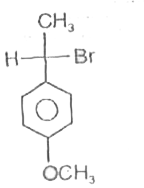
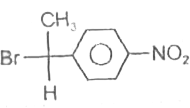
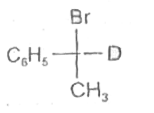
The correct Answer is:B
To determine which substrate will lead to maximum racemization under identical conditions during solvolysis, we need to analyze the stability of the carbocations formed from each substrate. The more stable the carbocation, the more racemization will occur because the SN1 mechanism allows for equal attack from both sides of the planar carbocation.
1. Understanding Racemization:
- Racemization occurs when a chiral compound converts into a racemic mixture, which contains equal amounts of enantiomers. This typically happens in reactions that involve carbocation intermediates, such as the SN1 mechanism.
2. Identify the Mechanism:
- The question involves solvolysis, which often follows the SN1 mechanism. In this mechanism, the formation of a carbocation is the rate-determining step.
3. Carbocation Stability:
- The stability of the carbocation is crucial for determining the extent of racemization. The more stable the carbocation, the more likely it is to form and lead to racemization.
- Carbocation stability follows the order: tertiary > secondary > primary > methyl. Additionally, resonance and inductive effects can also stabilize carbocations.
4. Analyze Each Substrate:
- For each substrate provided in the question, we need to analyze the carbocation that would form upon the departure of the leaving group (e.g., Br).
- Consider the effects of substituents on the carbocation stability:
- Substituent Effects: Electron-donating groups (like -OCH3) stabilize carbocations through resonance (+R effect), while electron-withdrawing groups (like -NO2) destabilize them through resonance (-R effect).
5. Compare the Carbocations:
- Identify which substrate leads to the most stable carbocation:
- Substrate A: Forms a carbocation stabilized by +I effect.
- Substrate B: Forms a carbocation stabilized by +R effect from -OCH3 and +I effect from -CH3.
- Substrate C: Forms a carbocation with resonance stabilization from benzene.
- Substrate D: Forms a carbocation that is destabilized by -R effect from -NO2.
6. Determine Maximum Racemization:
- The substrate that forms the most stable carbocation will lead to the maximum racemization. Based on the analysis:
- Substrate B (with -OCH3) has the most stabilizing effects (three factors: +R from -OCH3, +R from benzene, and +I from -CH3).
- Substrate C has two stabilizing factors.
- Substrate A has one stabilizing factor.
- Substrate D is destabilized.
7. Conclusion:
- Therefore, the substrate that would lead to maximum racemization under identical conditions is Substrate B.
- Racemization occurs when a chiral compound converts into a racemic mixture, which contains equal amounts of enantiomers. This typically happens in reactions that involve carbocation intermediates, such as the SN1 mechanism.
- The question involves solvolysis, which often follows the SN1 mechanism. In this mechanism, the formation of a carbocation is the rate-determining step.
- The stability of the carbocation is crucial for determining the extent of racemization. The more stable the carbocation, the more likely it is to form and lead to racemization.
- Carbocation stability follows the order: tertiary > secondary > primary > methyl. Additionally, resonance and inductive effects can also stabilize carbocations.
- For each substrate provided in the question, we need to analyze the carbocation that would form upon the departure of the leaving group (e.g., Br).
- Consider the effects of substituents on the carbocation stability:
- Substituent Effects: Electron-donating groups (like -OCH3) stabilize carbocations through resonance (+R effect), while electron-withdrawing groups (like -NO2) destabilize them through resonance (-R effect).
- Identify which substrate leads to the most stable carbocation:
- Substrate A: Forms a carbocation stabilized by +I effect.
- Substrate B: Forms a carbocation stabilized by +R effect from -OCH3 and +I effect from -CH3.
- Substrate C: Forms a carbocation with resonance stabilization from benzene.
- Substrate D: Forms a carbocation that is destabilized by -R effect from -NO2.
- The substrate that forms the most stable carbocation will lead to the maximum racemization. Based on the analysis:
- Substrate B (with -OCH3) has the most stabilizing effects (three factors: +R from -OCH3, +R from benzene, and +I from -CH3).
- Substrate C has two stabilizing factors.
- Substrate A has one stabilizing factor.
- Substrate D is destabilized.
- Therefore, the substrate that would lead to maximum racemization under identical conditions is Substrate B.
Topper's Solved these Questions
- HALOALKANES AND HALOARENES BOOK - AAKASH INSTITUTECHAPTER - HALOALKANES AND HALOARENES EXERCISE - ASSIGNMENT SECTION - C
38 Videos
- HALOALKANES AND HALOARENES BOOK - AAKASH INSTITUTECHAPTER - HALOALKANES AND HALOARENES EXERCISE - ASSIGNMENT SECTION -D
15 Videos
- HALOALKANES AND HALOARENES BOOK - AAKASH INSTITUTECHAPTER - HALOALKANES AND HALOARENES EXERCISE - ASSIGNMENT SECTON - A
45 Videos
- GENERAL PRINCIPLES AND PROCESSES OF ISOLATION OF ELEMENTSBOOK - AAKASH INSTITUTECHAPTER - GENERAL PRINCIPLES AND PROCESSES OF ISOLATION OF ELEMENTSEXERCISE - Try Yourself
33 Videos
- HYDROCARBONSBOOK - AAKASH INSTITUTECHAPTER - HYDROCARBONSEXERCISE - Assignment(Section - D) (Assertion -Reason Type Question)
24 Videos
Similar Questions
Knowledge Check
Which of the following substrate have maximum RQ value
AFatBCarbohydrateCPrpteinDoxalic acidWhich of the following substrates will gave racemised product?
A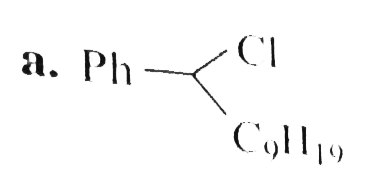 B
B C
C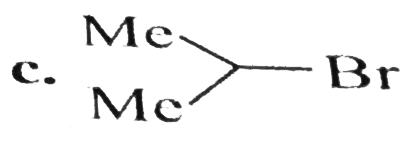 D
D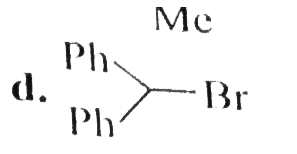
For which of the following ionic species radius would be maximum?
AC4−BN3−CO2−DMg2+
Which of the following would exert maximum osmotic pressure?
View SolutionWhich of the following would exert maximum osmotic pressure?
View SolutionWhich of the following situations would be the best for maximum transfer of learning
View SolutionWhich one of the following would not lead to formation of clones?
View SolutionWhich of the following is not a substrate for decarboxylation?
View Solution
